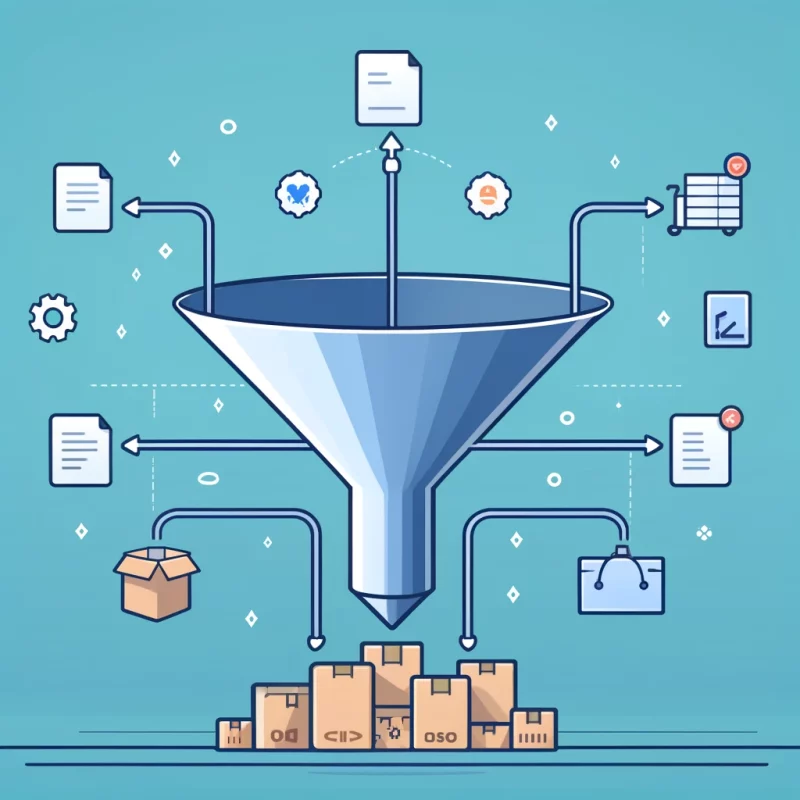In the competitive world of consumer packaged goods (CPG) brands, success is contingent upon getting numerous tasks right. This article aims to simplify the process by providing valuable insights tailored specifically for CPG brands. Our focus is on helping brands streamline order importing and processing, so they can allocate their time and resources towards what truly matters – their customers. From sourcing raw materials to effective marketing techniques, we explore a range of topics using real-life examples from successful brands. Join us as we delve into strategies for reducing errors in order importing and processing, enhancing efficiency, and ultimately maximizing customer satisfaction.
Streamlining Order Importing and Processing for CPG Brands
Overview of Order Importing and Processing for CPG Brands
Order importing and processing are critical functions for consumer packaged goods (CPG) brands. These processes involve receiving orders from customers, importing them into the company’s system, and processing them for fulfillment. Inefficient and manual order importing and processing can lead to errors, delays, and increased costs. Therefore, streamlining these processes is essential for the success of CPG brands.
Challenges in Order Importing and Processing for CPG Brands
Several challenges arise when it comes to order importing and processing for CPG brands. One of the most common challenges is data entry errors. Manual data entry is prone to mistakes, which can lead to incorrect orders and dissatisfied customers. Delays in order processing are another challenge, as they can result in late deliveries and unhappy customers. Additionally, inefficient communication between different teams involved in the process can lead to confusion and errors. The lack of visibility and tracking can also make it difficult to monitor the progress of orders. Furthermore, managing different order formats from various customers can be time-consuming and error-prone.
Importance of Streamlining Order Importing and Processing
Streamlining order importing and processing is crucial for CPG brands for several reasons. First and foremost, it improves efficiency and productivity. By automating manual and repetitive tasks, brands can process orders more quickly and accurately. This, in turn, leads to reduced errors and costs. By minimizing data entry errors and avoiding delays, CPG brands can save time and resources. Importantly, streamlining order importing and processing enhances customer satisfaction. Orders are processed more efficiently, leading to quicker deliveries and improved customer experiences. Moreover, streamlining these processes provides a competitive advantage by improving overall business operations.
Automation in Order Importing and Processing
Automation plays a significant role in streamlining order importing and processing for CPG brands. By utilizing automated systems, brands can eliminate manual tasks and reduce human error. Automated order importing systems enable orders to be seamlessly imported into the company’s systems, eliminating the need for manual data entry. This not only saves time but also reduces the chance of errors. Additionally, automated data processing tools can be used to validate and process orders automatically, ensuring accuracy and efficiency.
Integration with Suppliers and Manufacturers
To further streamline order importing and processing, CPG brands should prioritize integration with their suppliers and manufacturers. Establishing strong partnerships with these key stakeholders is crucial. One effective method of integration is through the implementation of Electronic Data Interchange (EDI). EDI allows for the real-time exchange of electronic documents, such as purchase orders and invoices. This integration eliminates the need for manual communication and data entry, leading to faster and more accurate order processing. Another integration method is using API integration, which enables seamless data exchange between different systems, ensuring real-time visibility and synchronization of information.
Standardizing Order Formats
Standardizing order formats is essential for efficient order importing and processing. By establishing a standardized order template, CPG brands can ensure consistency and simplify the processing of orders. A standard order template includes necessary information such as customer details, product descriptions, quantities, and delivery instructions. Communicating the order format requirements to partners, such as suppliers and manufacturers, is crucial to avoid errors and delays. This standardization reduces manual data entry and minimizes the chance of transcription errors.
Implementing Order Management Software
Implementing order management software is a key step in streamlining order importing and processing for CPG brands. Order management software offers features and benefits that enhance efficiency and accuracy. These systems enable seamless integration with other business systems, such as inventory management and customer relationship management. With order management software, CPG brands can automate order processing, generate invoices, and track order status in real-time. Choosing the right order management software requires careful consideration of the brand’s specific needs and functionalities. Once selected, it is important to provide training to teams to ensure effective implementation and utilization of the software.
Streamlining Order Approval Process
Streamlining the order approval process is crucial to reduce manual interventions and delays. CPG brands can achieve this by implementing automated approval workflows. With automated approval workflows, predefined criteria are set, and orders meeting these criteria are automatically approved. This eliminates the need for manual review and speeds up the order processing time. Setting clear approval criteria is essential to ensure that only valid and accurate orders are approved. Reducing the number of manual approval steps in the process helps in improving overall efficiency and reducing the chances of errors.
Improving Order Accuracy and Completeness
Improving order accuracy and completeness is vital for seamless order importing and processing. By implementing automated data validation tools, CPG brands can ensure that orders are error-free and complete. These tools can validate customer information, product codes, quantities, and other important details, minimizing errors caused by manual data entry. Additionally, utilizing order management software with built-in validation features helps in achieving accurate and complete orders. Ensuring order accuracy and completeness reduces the need for manual intervention, improving efficiency and customer satisfaction.
Optimizing Order Fulfillment
Order fulfillment is a critical part of order importing and processing for CPG brands. To optimize order fulfillment, efficient warehouse management is essential. By implementing effective warehouse management systems, brands can ensure that products are stored, organized, and picked accurately. Moreover, order tracking and status updates are vital for keeping customers informed about their orders. This can be achieved through integrated systems that provide real-time information on order status and estimated delivery dates. Implementing efficient pick-pack-ship processes, such as barcode scanning and automated packing, further streamline order fulfillment and improve efficiency.
In conclusion, streamlining order importing and processing is critical for the success of CPG brands. By addressing challenges, implementing automation, integrating with suppliers, standardizing order formats, utilizing order management software, and optimizing order fulfillment, brands can enhance efficiency, reduce errors, and improve customer satisfaction. Embracing these practices not only streamlines processes but also provides a competitive advantage in the dynamic CPG industry.








